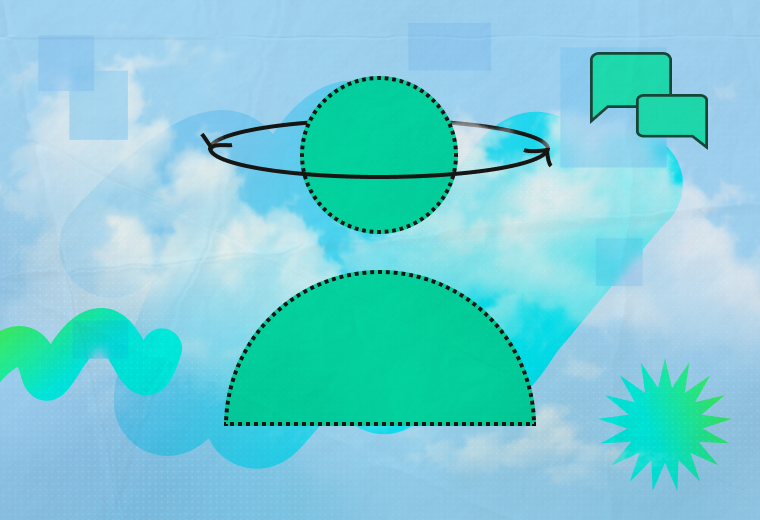While the best onboarding practices can greatly improve talent retention, a bad onboarding experience can lead new employees to start looking for other options immediately. According to Shortlister’s employee turnover statistics, 33% of new employees leave their job within the first 6 months of being hired.
Onboarding becomes even more challenging when the new hire will be working remotely and onboarding has to be completed virtually. However, amid these challenges, do you know that you can reduce the chances of new remote employee attrition by over 80% and ensure that they also become productive much faster?
In this guide, Amploo will help you to create a remote onboarding checklist that wins the hearts of your new hires and gets them up to speed in no time.
Benefits of a Successful Remote Onboarding Process
Wondering how your onboarding process can help your new hires feel at home and become productive quicker? An airtight induction exercise can:
- Make new employees feel welcome and connected to other team members.
- Create an exciting and engaging environment even from a distance.
- Arm remote workers with tools to master the difficulties arising from remote work.
- Acquaint new hires with a suite of tools for communication and productivity.
- Equip them with the fundamental skills for the new role.
Considerations for Your Perfect Remote Onboarding Checklist
To achieve the benefits outlined above, you have to treat onboarding, not as an event but as a process that spans a few weeks to a few months. The goal is to absorb your new remote employee into the company’s system and culture, and that is not something that cannot be achieved in one induction meeting on the first day of work. We suggest you consider incorporating the following ideas as you create your remote hire onboarding checklist.
During the Hiring Process
A successful onboarding process is something that you prepare for before you even identify the individual you will add to your team. Here are some ideas to include in your hiring process.
- Clearly outline what the role entails in the job posting so that you attract the right talent.
- Create anticipation and excitement during the interview process. Imbue the interview of each prospect with company culture and determine if any of your prospects are compatible with your organization.
- Ask interview questions that are specific to remote roles. How your successful applicant organizes themselves remotely is important. Tailor your questions not just for the role, but for someone who will be executing the role from a distance.
Offering the Remote Job
Now that you have settled for the applicant with the right mix of skills and compatibility with the rest of your team, it is time to communicate expectations and complete the necessary paperwork. Below are some things to consider:
- Will the remote employee be required to work on a fixed or flexible schedule?
- Clearly outline procedures for taking vacations, off days, sick leave or study leave.
- Are they required to bring their device or will the company supply all necessary equipment? Do they provide their internet connection?
- Are there any meetings or events the employee is mandated to attend?
- How will they report working hours or track performance?
- Which online documentation tools do you need to send paperwork and have it completed and signed virtually.
- Because your employee will be working remotely, you can send them all the paperwork as soon as they have accepted your job offer. Paperwork will include a job contract, tax forms if necessary, a list of duties, and an employee handbook, among others.
Preboarding
You do not have to wait until the new employee’s first day of work to begin the onboarding process. Get your new hire excited, set up, and engaged with your existing team members over the few days before they begin work.
- Make your new hire feel welcome. Get your interview panel and one of the company leaders to send personalized welcome emails.
- Ensure they have all the necessary equipment before their first day.
- Create an email account for the new employee and invite them to join the company’s platforms.
- Set up a virtual coffee date with a few employees to meet the new remote hire and get them more acquainted with the team.
- Allow your new hire to submit any burning questions they have. You and your team can provide answers in document format and maybe even save them for future hires.
- Supply them with a schedule for the rest of the onboarding process.
Day One
For your new hire, this is possibly one of the days they feel the most nervous. Do we not all feel the same way on our first day at a new job? Remember to make them feel comfortable and welcome. Here are some things you may consider for day one onboarding:
- Motivate them to perform at their best by having top performers in the company share their experiences. Also, outline to them how they can grow within their position and any opportunities for a bigger role.
- Make them feel like they are working in the physical office by introducing them to the rest of the team, especially the ones they will be working closely with. Consider taking them on a virtual tour of the working space as well.
- Discuss goals and deliverables.
- Given there is enough time, you could start training them on some light exercises.
Adopt Phased Training and Team-Building
Your onboarding process should not end on day one. For the next few weeks to months, progressively ramp up the amount of work being administered to the employee. Some companies make the mistake of not training their new hires for fear that they could leave to work for their competition immediately. However, training your new hire takes away the confusion that we all experience during the first few weeks of starting a new role, makes them feel comfortable, and ensures they become productive in no time. Consider having ongoing and phased training within your onboarding plan. Include a few key projects to measure their progression. You could use these later to assess the completion of the onboarding process too.
The excitement and engagement you created do not have to die down within the first few weeks. Include other remote activities to keep the new hire engaged and connected to the rest of the team.
What Does a Successful Onboarding Look Like to You?
Peter Drucker is often quoted as saying, “You can’t manage what you can’t measure.” To manage your onboarding process, there are things you need to measure to help you determine the progression, completion, and success of your remote hire onboarding. Below are a few ideas:
- New-hire satisfaction and happiness.
- Time to productivity.
- Evaluate onboarding process completion based on projects completed or an exam taken at the close of the process.
Remember to celebrate the successful completion of your new remote hire by sending them company-branded gifts and swag. You could even throw in a virtual party to spice it up.
Conclusion
Need help setting your new remote employees up for success? Our onboarding experts at Amploo can help to develop a virtual onboarding plan that makes your new hires feel comfortable in their new roles, quickens their way to productivity, and makes you feel confident in retaining the new talent.



